Kanheri Caves
Kanheri is an hour train ride away in Mumbai!
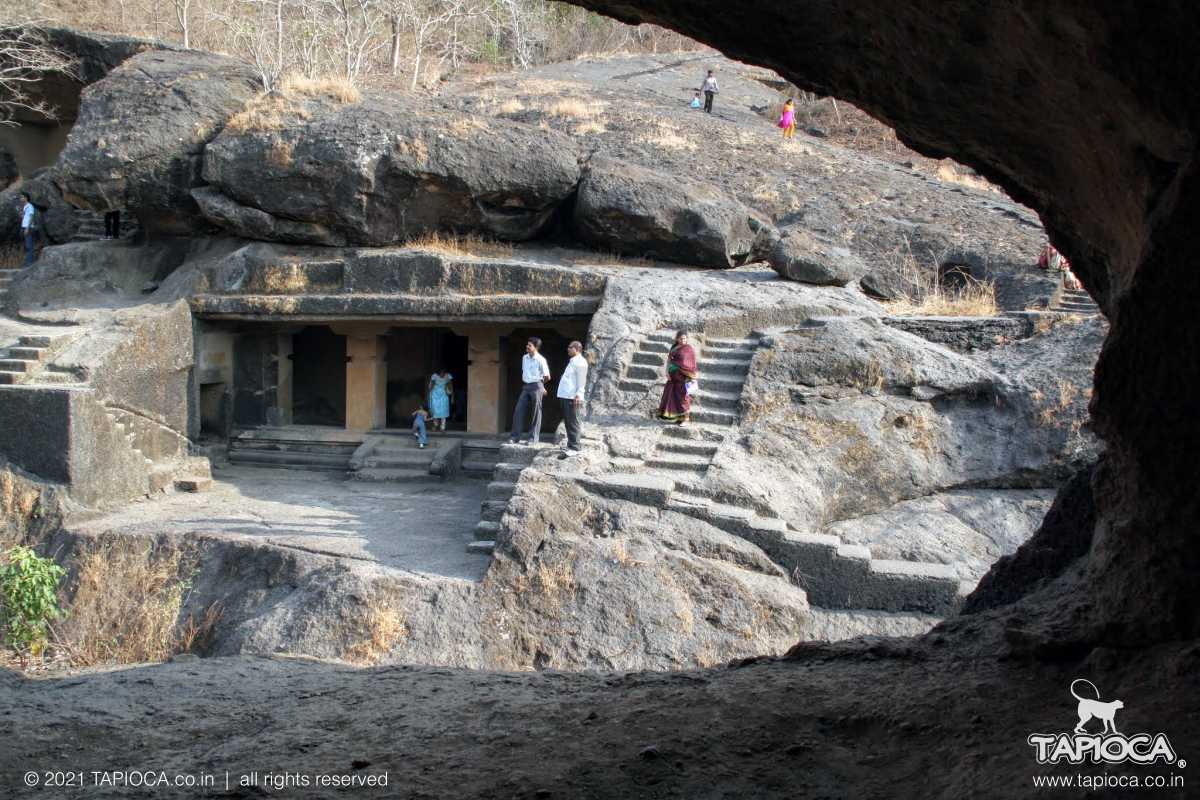
Mumbai
You can explore a number of residential quarters (viharas) in Kanheri
K
anheri Caves are located inside the Sanjay Gandhi National Park at the northern outskirts of Mumbai.Why visit Kanheri Caves?
[#bar-a] Kanheri was full fledged - and famous - learning center of Buddhism dating from 3rd century BC.
[#bar-a] Visit to experience the sophistication of cave architecture and sculptural art. The architectural inventory of Kanheri is versatile , even when compare with Ellora or Ajanta
[#bar-a] Some of the tallest Buddha sculptures carved in a cave are in Kanheri
[#bar-a] Kanheri is easy to access. This site is located right at the fringes of Mumbai city. Baring probably Elephanta Caves , no other caves in the region has a better connectivity than Kanheri.
[#bar-a] You can do it as a day trip ( even as a half day trip if you would..) from Mumbai . Catch any suburban train to Borivali and you are at Kanheri, well ,almost.
[#bar-a] Club with other activities inside the Sanjay Gandhi National Park (trails, safari, boating, toy train etc)
In the number of caves made in a single hill , Kanheri is the largest such Buddhist site in India. Its history of spans from as late as 11 century AD to as early as 3rd century BC. That makes it a unique site in India that has gone through the rise and decline of Buddhism in India.
There existed two streams of Buddhism, the Hinayana ( the lesser vehicle) and Mahayana (the greater vehicle). Kanheri carries the legacy of both these schools of Buddhism.
[#dot-c]The caves of the Hinayana period (the older caves ) are simple, small and devoid of carvings. Notably absent is the image of Buddha. In contrast the Mahayana architecture is more ambitious in scale, ornate in appearance and spot images of Buddha.
[#dot-c]There are even evidences suggesting that the much popular Ellora Caves caves were executed by master craftsmen migrated from Kanheri.There are striking similarity between some of the largest caves in Kanheri and Ellora Caves. In other words , the architectural blueprints and prototypes of Ellora Caves caves can be traced in Kanheri.
Kanheri caves in Mumbai is often compared with other caves in the region such as Ajanta and Ellora Caves. And often the conclusion is that it is not spectacular as Ajanta and Ellora Caves!
Somehow it is not a fair comparison. Kanheri is an important, and spectacular, site in its own right. So forget about if you've already visited the other famous caves in the region, you can still visit Kanheri and feel good that you've visited it. There are a few factors that sets Kanheri apart.
The architectural inventory of Kanheri is versatile , even when compare with many other more popular sites such as Ellora Caves or Ajanta .
[#dot-c]Chaityas: A Chaitya is a Buddhist shrine. Typically it is a long hall with an arched shaped (barrel vaulted) ceiling. Two rows of pillars further divide the hall into a central nave and two narrow aisles on either sides of the nave in its longer axis.
Almost at the inner extreme of the hall is a stupa with a semi spherical top, the object of worship in the Chaitya. In Kanheri you can visit many Chaitya halls - some completed, some abandoned during various stages of its excavation. The cathedral shrine in Kanheri is one of the largest such caves made in ancient India. In fact it is the second largest cave Chaitya in India, the largest being the Chaitya of Karla Caves near Pune.
[#dot-c]Viharas: These are monasteries or residence of monks. The largest number of caves in Kanheri belongs to this group. Now that throws some light of the monastery population once dwelled in Kanheri.
Viharas are typically compact caves more human in scale. Many of them follow a pattern where multiple chambers are attached to a large central room that has a door to the porch. Inside the chambers you can even find rock cut beds, some even with a pillow like feature as headrest!
Many viharas have benches and seats carved as integral part of the caves.
[#dot-c]Sculptures and Carvings : Kanheri has some of the tallest images of Buddha in India. The caves in Kanheri are less ornate in comparison with other popular sites like Ajanta , Ellora Caves or Elephanta Caves .
Many of the caves have Buddhists themes carved on the wall and facade. For the archeologists Kanheri is a goldmine as its inscriptions - numerous in numbers - give a good insight into Kanheri's past in particular and the history of Buddhism in India in general.
Stupas: These are domical pillars usually attached as the focus point in a shrine. Stupas are carved in situ within the shrine. But some stupas are created out of structural work, especially the one used to mark the burial place. Kanheri as a Buddhist site has the rare distinction of having a large burial ground.
The burial place is located almost at the top plateau of the hill. There are many structural stupas in this area that is erected on the burial of monks of repute.
[#dot-c]Cisterns and Water Works : Topically a cistern is located in the courtyard right next to the entrance of a cave. They served as water storage tanks for the daily use of the residents.
On the rocky surface on the hill one can see the groves and chancel networks that direct rainwater to the cisterns. What is thus collected during the monsoon season could be preserved in the cistern for the summer.
There are even some large open ponds excavated on the surface of the rock. Probably these served as community utility for bathing and washing cloths. Right beneath, at the cleft of two hilly formations is the remains of a dam. Here too the water stored was for community usage and for agriculture.
Kanheri has a sophisticated sanitary and drainage system.
Toilets are connected with the drainage channels that eventually end in a sewage tank. One can still see the remains of the toilets and sanitary system in Kanheri.
[#dot-c]Stairs, terraces and footpaths: All of it is carved out on the surface of this hard volcanic rock. Some of the long stairways to the upper portions of the hill are in superbly preserved condition. The network of paths connects the courts of the caves. The stairs give access to the upper layer of caves in the multi terraced hill of Kanheri.
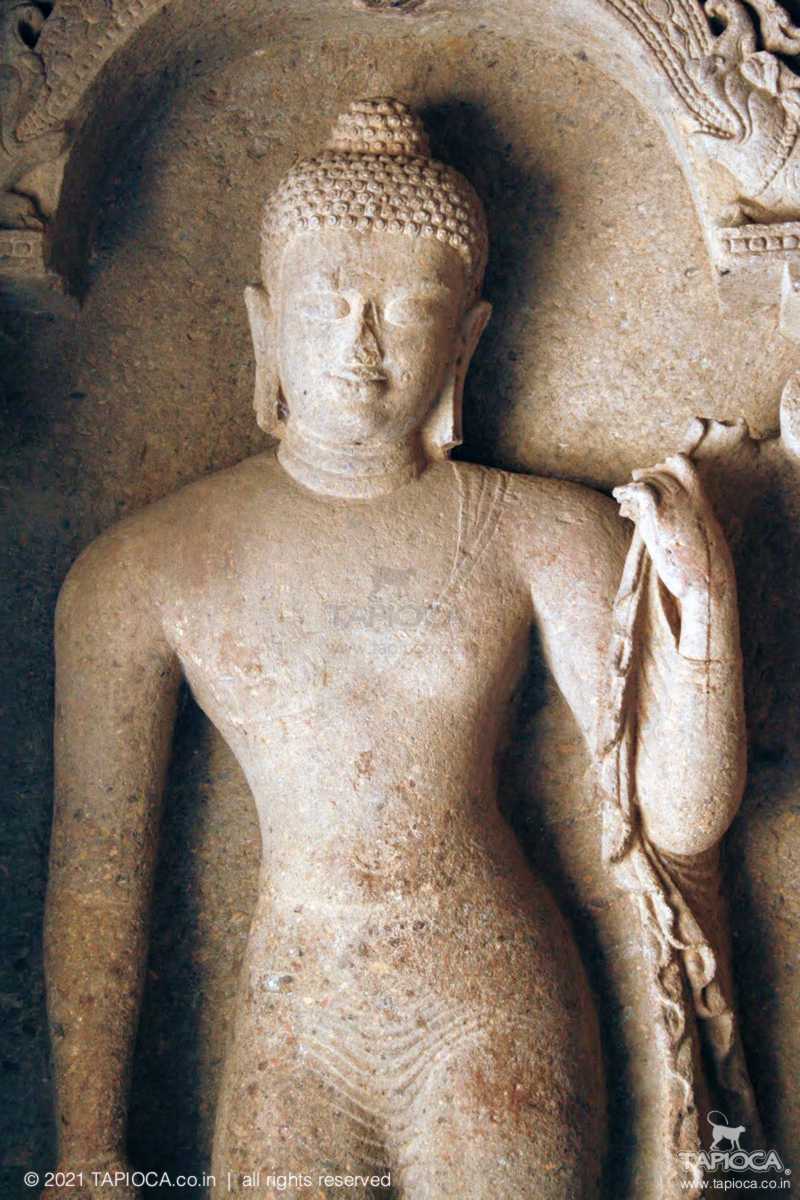
Mumbai
Kanheri Caves has some of the tallest images of Buddha in India
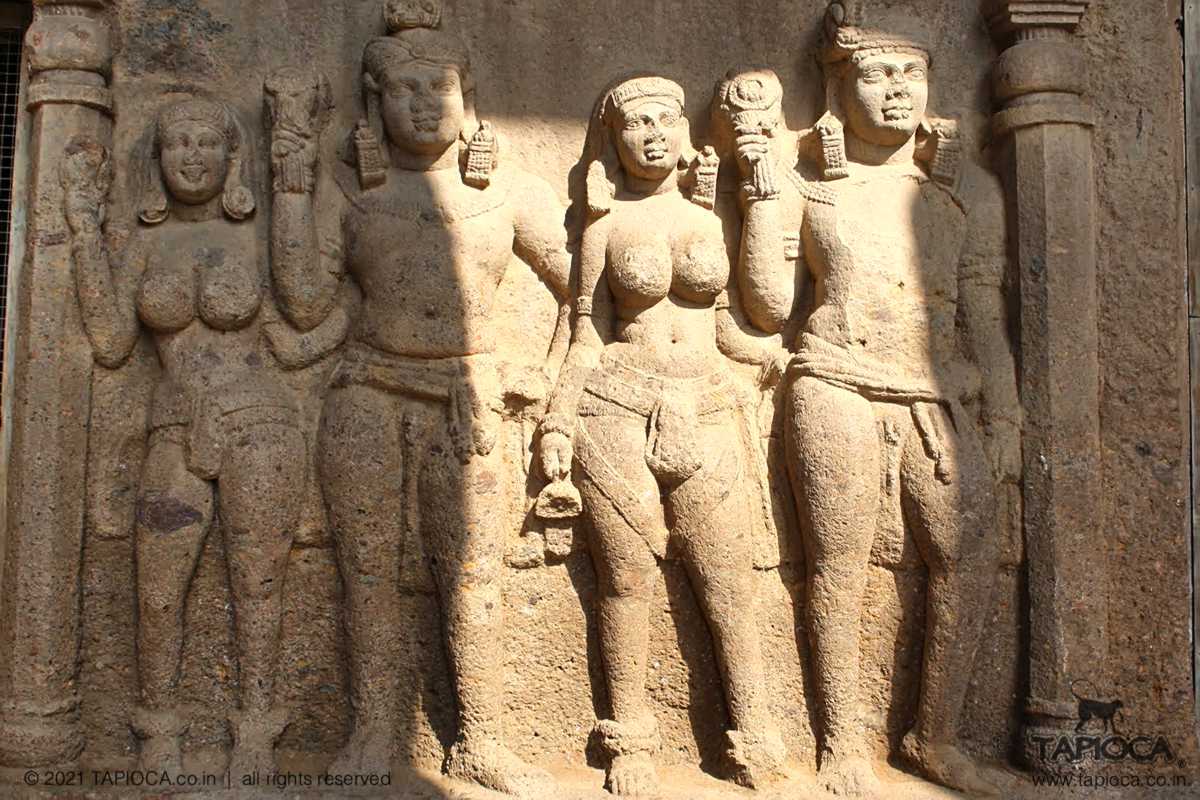
Mumbai
Donor figures at Kanheri Caves.
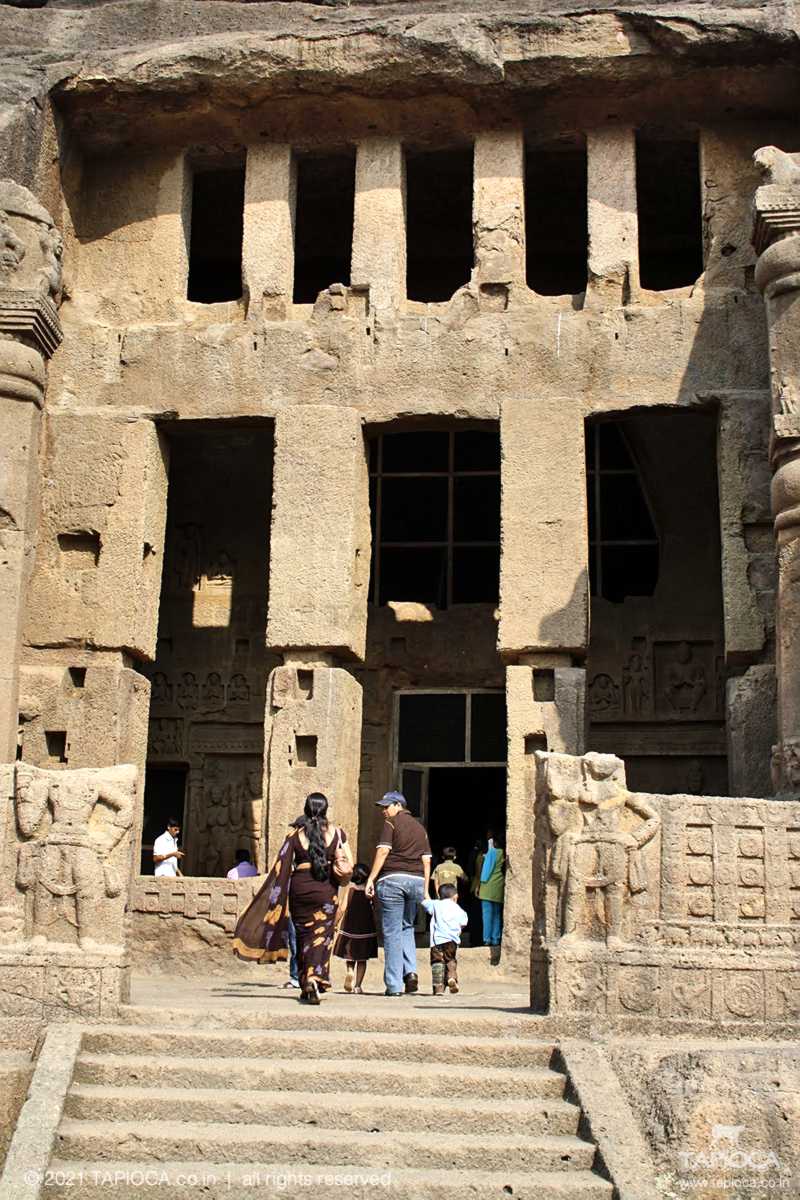
Gateway to Chaitya
Gateway to Chaitya
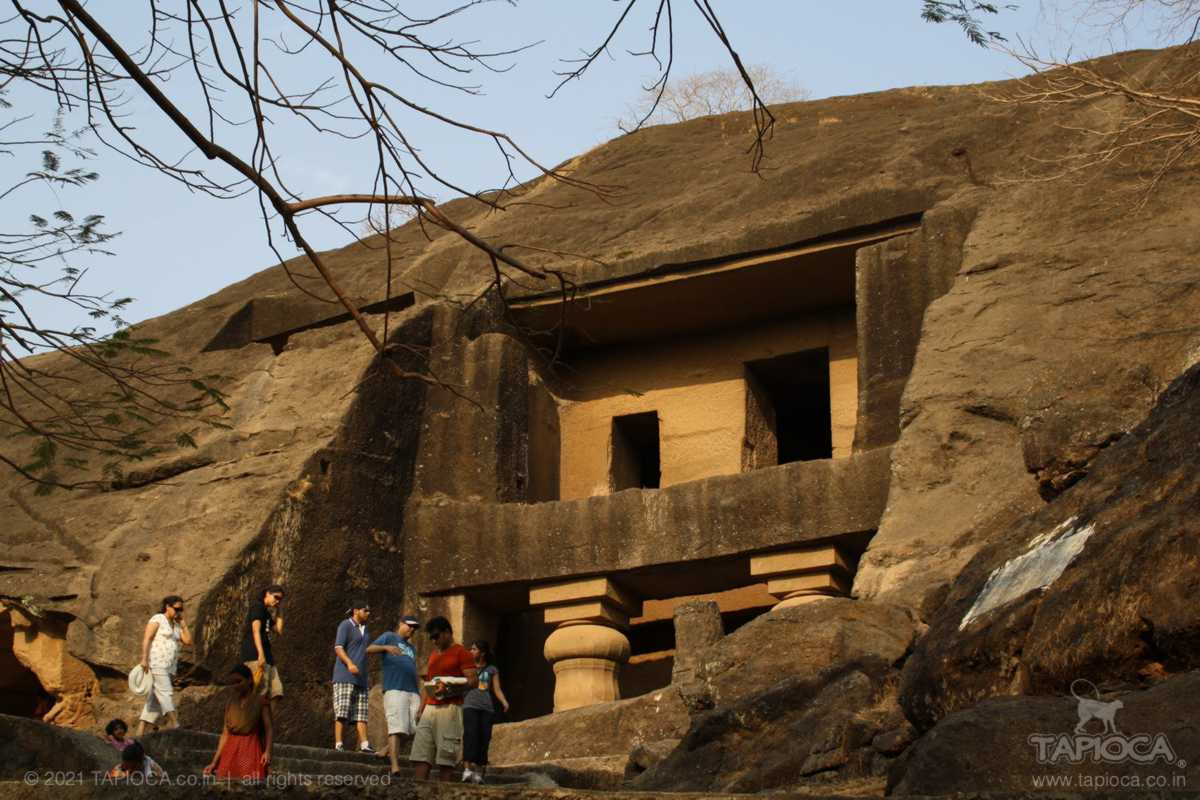
Mumbai
One of caves at Kanheri
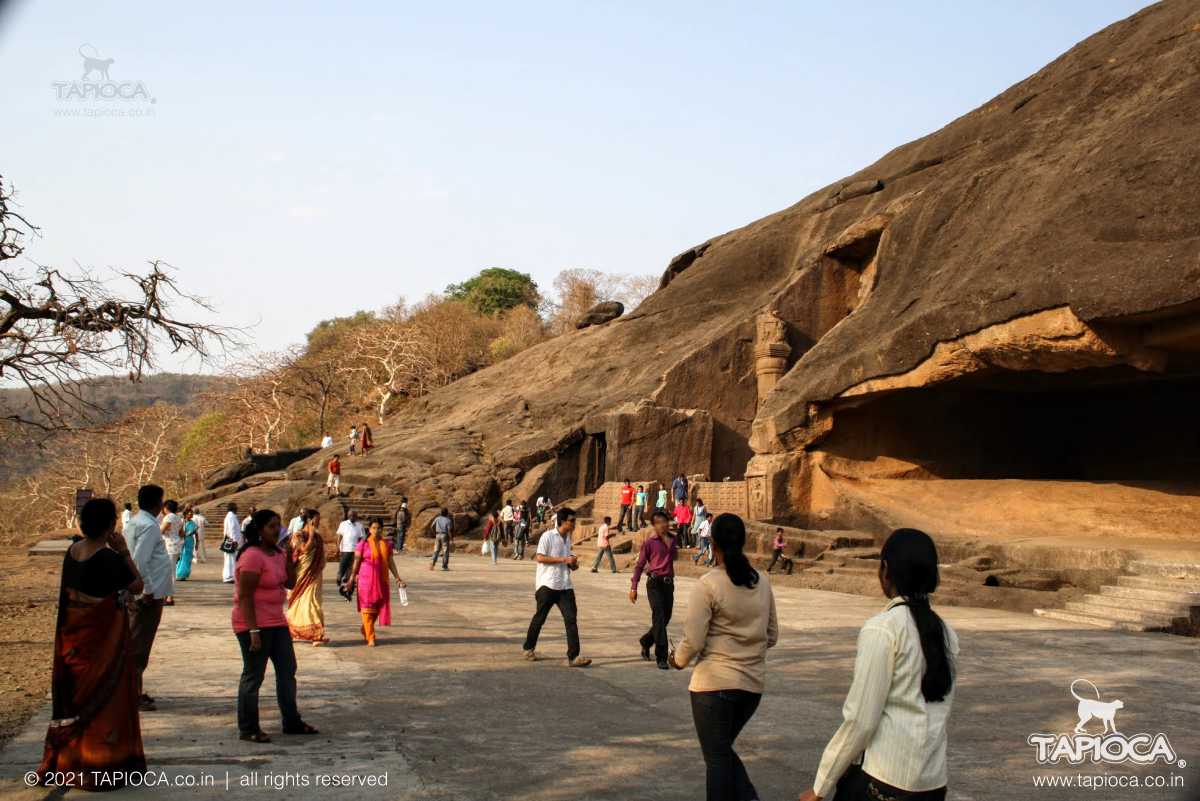
Mumbai
Open court in front of the main caves
